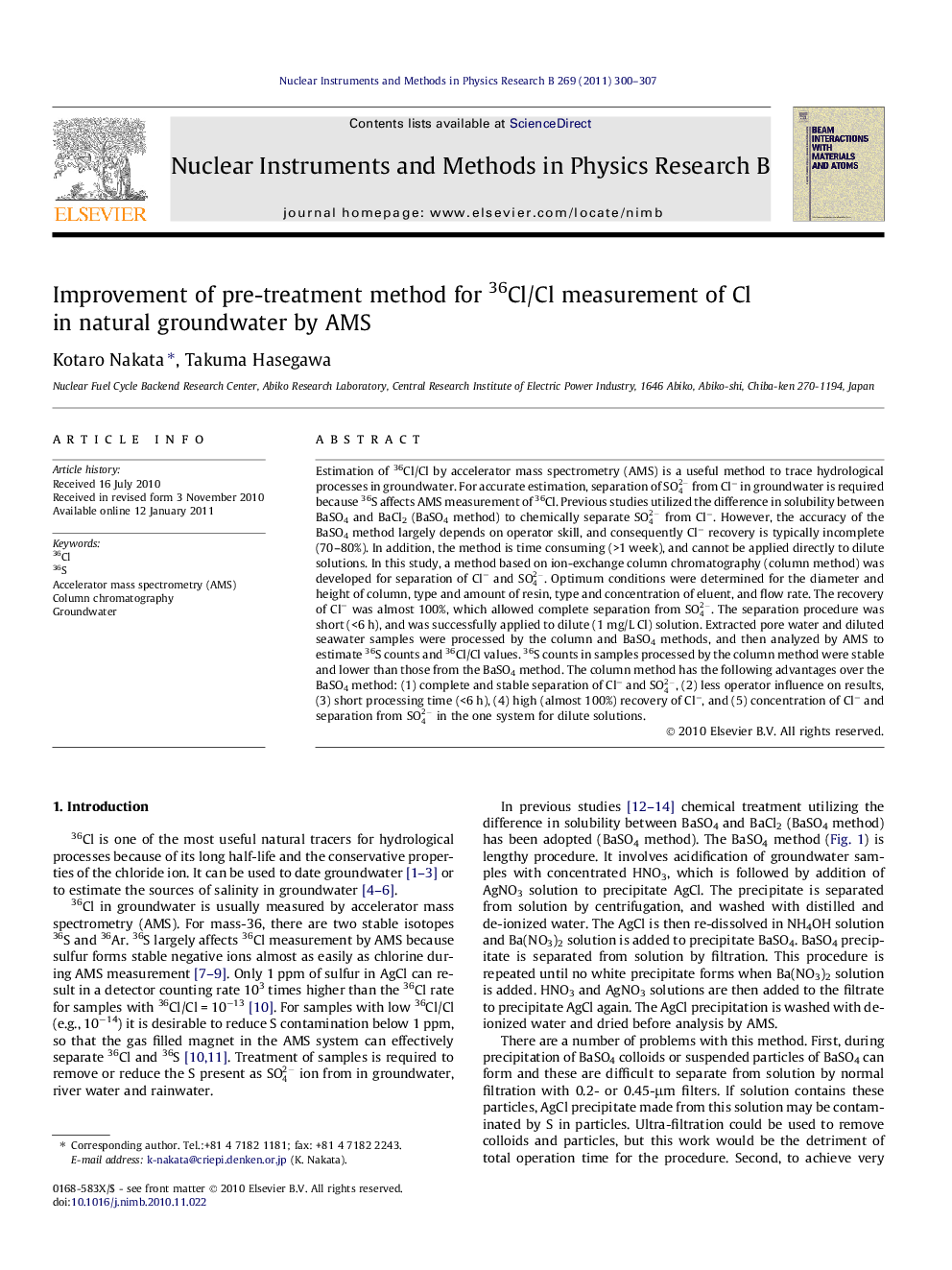| Article ID | Journal | Published Year | Pages | File Type |
|---|---|---|---|---|
| 1683346 | Nuclear Instruments and Methods in Physics Research Section B: Beam Interactions with Materials and Atoms | 2011 | 8 Pages |
Estimation of 36Cl/Cl by accelerator mass spectrometry (AMS) is a useful method to trace hydrological processes in groundwater. For accurate estimation, separation of SO42- from Cl− in groundwater is required because 36S affects AMS measurement of 36Cl. Previous studies utilized the difference in solubility between BaSO4 and BaCl2 (BaSO4 method) to chemically separate SO42- from Cl−. However, the accuracy of the BaSO4 method largely depends on operator skill, and consequently Cl− recovery is typically incomplete (70–80%). In addition, the method is time consuming (>1 week), and cannot be applied directly to dilute solutions. In this study, a method based on ion-exchange column chromatography (column method) was developed for separation of Cl− and SO42-. Optimum conditions were determined for the diameter and height of column, type and amount of resin, type and concentration of eluent, and flow rate. The recovery of Cl− was almost 100%, which allowed complete separation from SO42-. The separation procedure was short (<6 h), and was successfully applied to dilute (1 mg/L Cl) solution. Extracted pore water and diluted seawater samples were processed by the column and BaSO4 methods, and then analyzed by AMS to estimate 36S counts and 36Cl/Cl values. 36S counts in samples processed by the column method were stable and lower than those from the BaSO4 method. The column method has the following advantages over the BaSO4 method: (1) complete and stable separation of Cl− and SO42-, (2) less operator influence on results, (3) short processing time (<6 h), (4) high (almost 100%) recovery of Cl−, and (5) concentration of Cl− and separation from SO42- in the one system for dilute solutions.
